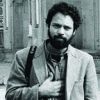Has the top court done its job?

It can be said the court has picked peace over justice and, arguably, pragmatism over principles of fairness.
Faced with an intractable dispute laden with politics and religion, layered with history and fiction, myth and propaganda, it has done what was widely surmised by many who have followed the dispute over the years. It can be said the court has picked peace over justice, and arguably pragmatism over principles of fairness and equity. Not many court verdicts are perfect and almost none that leaves every party satisfied. Given the significance of the Ayodhya issue to India’s recent past, portentous present and future course as a multi-religious and richly diverse democracy, the Supreme Court had a rare opportunity to stamp its authority as the protector of justice, equity and rule of law. Has the court made good use of it?
Since 1855, when the issue first flared, over not the mosque but in fact, over the demolition of a mosque atop the nearby Hanumangarhi temple, each chapter of this sordid saga has reflected our country’s evolution. It has also reflected the application of justice, initially by the British when suits asking for rights over the Ram Chabutra were dismissed by the Courts, and later in post-independence communally scarred free India, when the local magistrate allegedly connived and ensured that the mosque was locked and transferred to government custody once the Ram-Sita idols were forcibly implanted by a band of sadhus in 1949. At that time too, political considerations of the communal kind were the motivation but the staunchly secular, India’s first Prime Minister Jawaharlal Nehru ensured that the new republic was enthralled more by socialism than narrow sectarianism. However, as the promise of a new and equal India proved hollower with every passing decade, and a new politics of identity and appeasement too root, the Ayodhya dispute emerged gradually on to the national centrestage. A toxic culture of elitism, apathy and vote-bank politics (of not just the religious kind) infected the body politic of the country by the mid 1980s and the sudden death of Prime Minister Indira Gandhi inadvertently precipitated the rise of religion-based politics centred around the Babri masjid-Ram Janambhoomi issue. At least, even if Nehru couldn’t see the mosque restored back to Muslims, he didn’t allow the ugly head of communalism to rear its head in mainstream politics. Consequently, even though justice was not done, more injustice was put in abeyance.
However, his grandson, Rajiv Gandhi who had to overnight turn from an aviation pilot to Prime Minister was neither as politically astute as his mother, nor ideologically committed as his grandfather. He was not even a politican like either. By the time Rajiv was thrust into the job, Indian politics was corrupted to the core and its government reduced to a club of industrialists and political dynasts who were often less trustworthy in the public’s eye than even the government machinery they controlled. Unable to stand up to first the Muslim clergy he negated a SC verdict through an Act of Parliament. The RSS backed and VHP-led Ram temple movement, which was just two years old then, In 1986, Rajiv Gandhi widely arranged the opening of the locks of the mosque but only Hindus were allowed to worship there. A few years later, his party, in a desperate attempt to return to power launched its campaign from Ayodhya where Rajiv promised he would usher in Ram Rajya. During this time it was in this context that courts too played a role that was not above criticism, the admitting of the Ram Lalla Viraajman, the deity suit in 1989 was certainly a decision that attracted criticism. What could have been resolved as a property dispute was allowed to fester till it became a chimera for pluralism and secularism. The destruction of the Babri masjid by Karsevaks despite the presence of thousands of security forces and SC’s own monitors razed to the ground the already crumbling rule of law in the country.
All through the Ram temple movement, the pro-temple groups had asserted that matters of faith cannot be decided by courts. And on 6th December, the court’s orders were flouted with the same impunity with which the three domes of the 16 th century mosque were pulled down. In the subsequent decade and a half, India seemingly turned its back to Ayodhya and fixated over economic growth, corruption and misgovernance. The Allahabad high court verdict too had provided a compromise formula based on prioritising peace over justice, but failed to deliver on either. In the last few years, ‘Jai Shri Ram’ chants have instilled sadly been appropriated by criminals who wilfully terrorise Muslims and dalits.
The verdict been delivered on Barawafat, the day celebrated by Muslims to mark the birthday of Prophet Mohammad. In view of the sensitive nature of the case, the administration has imposed Section 144 and banned processions and celebrations of any kind and by any community. And although Muslims across the spectrum have welcomed the verdict, there is a lingering feeling among some once again the rule of law has been selectively applied to them. This is an impression that the Supreme Court should do well to correct in the future course by closely monitoring the implementation of its landmark verdict. Only then it would have finished the job.

